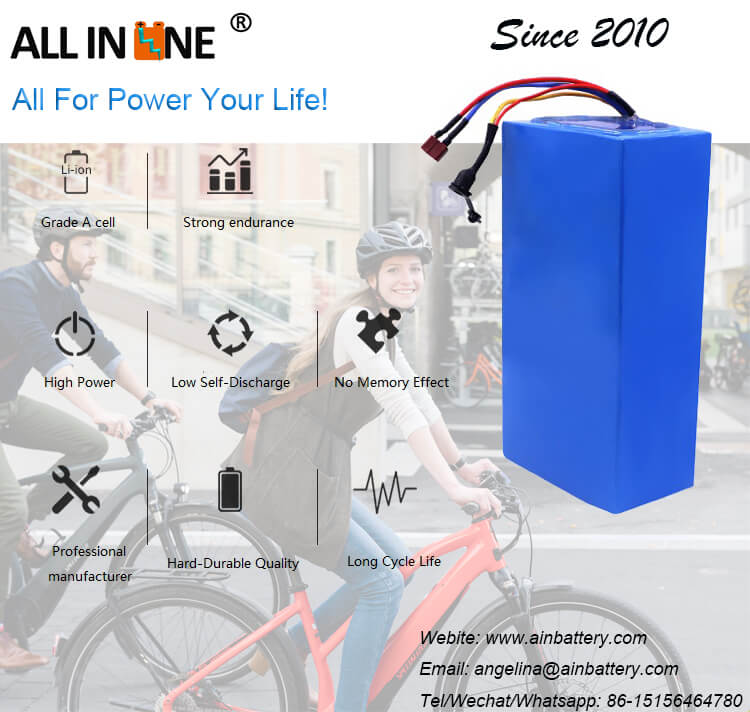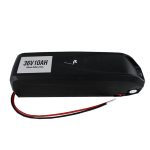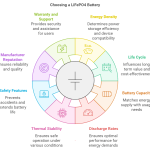
Batteries are arguably the most vital component of an electric bike. As a new or versatile e-bike user, we believe you are aware of the importance of an e-bike battery. However, there is a popular question that most e-bike users ask. How do you choose the right battery for your electric bike? How do you know which one is the best of all the varieties of available battery types? What type of cell do I purchase for my electric bike?
Basic e-bike battery terminologies
Before choosing the best battery for your e-bike, you have to be able to understand the terminology used to describe e-bike batteries. We will define a few terminologies. This will help you understand more about your batteries.
Here is a list of the most common terms used when discussing e-bikes:
Amperes (Amps)
Ampere per hour (Ah)
ਵੋਲਟੇਜ (V)
Watts (W)
Watt per hour (Wh)
Amperes (Amps)
This is the unit of electrical current. It is an international standard unit. You can compare amperes to the size or diameter of a pipe with water passing through it. This would mean more amperes means a bigger pipe with more water inflow per second.
Ampere per hour (Ah)
This is a unit of electrical charge, with dimensions of electric current against time. It is an indicator of the battery capacity. A battery of about 15Ah can discharge 1.5A for ten (10) hours continuously or discharge 15A for an hour continuously.
ਵੋਲਟੇਜ (V)
This is commonly known as volts. It is the electrostatic potential difference between two (2) conductors (Live and Neutral conductors). The best electric bike battery voltage reading is 400 volts.
Watts (W)
This is a standard unit of power. The higher the number of watts, the higher the power output from your electric bike. Also, one (1) watt is equal to one (1) voltage multiplied by one (1) ampere.
Watt per hour (Wh)
This is a unit of power per given time. It measures the total power output per given time. It is not like watts, which regulates the power output in a single moment. Think about it as speed and distance. For instance, if your car speed is in watts, then the distance from one place to another would be watt-hours. So, if your electric bike’s battery discharges at 100W for two (2) hours then, it has used up 200Wh.
Nominal voltages are sometimes applicable in electric bike volts measurement. This is because every cell in a battery can withstand a certain range of voltages.
Now that you know the basic terminology, we will explain the different types of e-bike batteries. From the onset, batteries have been the determining factor on how much fun and value you can enjoy with your e-bike. Below is a list of the most common electric bike batteries available in the market.
Lithium-ion batteries are automatically becoming the default battery for every electric bike available in the market today. The power of about 90% of electric bikes in the market. Lithium-ion batteries produce more power output for their weight than the other types of batteries. Most importantly, they are more durable and will last longer.
Also, there are three major types of Lithium-ion batteries. These types have a few differences. However, one thing in common; they all last longer.
On the other hand, they are small and require functional electronic components to prevent them from catching fire or self-destructing. However, none of this should be your concern. Manufacturers always have fail-safes in place to prevent accidents. However, it is still crucial for you to understand how to handle and maintain them properly.
Though Lithium-ion batteries can be costly, we recommend that you purchase a Lithium-ion battery for your electric bike. They are the ideal type of battery for every electric bike – in terms of range, weight, longevity, and more. Below are the three kinds of Lithium-ion batteries.
Lithium Manganese batteries (LiMg204)
This is the latest type of Lithium-ion battery available. They possess good levels of durability and range. Also, manufacturers claim that they last longer than other Lithium batteries. It would interest you to know that this battery type is currently being used in some hybrid cars.
Lithium Cobalt batteries (LCo)
This is another type of lithium-ion battery. It is a little bit older in the market than Lithium Manganese batteries. It is believed to have higher energy density than other lithium batteries. Additionally, it offers you maximum power, is light and reliable.
Lithium-ion Polymer Batteries (Li-pol)
This type of lithium battery is no different than other lithium-ion batteries in terms of weight, price, and range. Nevertheless, as a polymer, lithium polymers can undergo different molding processes to bring out fantastic shapes.
They do not contain any liquids and requires less protective battery casing compared to other lithium batteries. This liquid-free feature means they are less vulnerable and provide more stability. Hence, they are ideal for use in low power applications – like electric bikes.
Things to look out for before choosing a Lithium-ion Battery
In choosing a lithium battery for your electric bike, you need to consider the voltage and ampere ratings. This is important as it determines the range, durability, and power input of your battery.
Volts and amperes ratings are the two major talking points when choosing the right battery for your electric bike. You should know that selecting the wrong voltage/ampere rating can damage your e-bike or cause a fire outburst.
ਵੋਲਟੇਜ
Every electric bike has a unique input volt range. This means you can only power your electric bike with the exact voltage required to power it. You should not power your electric bike with a battery with a voltage that is more or less than the recommended range. This is necessary to avoid complications.
Using a battery with lesser voltage means you will not have enough power to significantly run your bike’s motor system. However, using a higher voltage can damage the sensitive electrical parts of the motor system. Most electric bikes accept nominal voltages – 36 volts or 48 volts. Generally, electric bikes come outfitted with a 18650 cell.
Lithium cobalt battery cells can hold up to 4.3v with a full charge and about 3.1v after discharging.
For example; if your bike has a lithium manganese cell, with a rating of 49volts and 13 cell clusters. Each cluster has an average voltage of 3.8v.
Here is how to calculate the average voltage of your battery;
3.8volts x 13 cells = 49.4volts or 49V average.
However, after a full charge; this “49v” average battery will hold 4.3v * 13 cells = 55.9volts.
As you discharge the battery, it will reduce every cell to 3.1v from 4.3v – minimum volts of 3.1v * 13 = 40.3v.
This average voltage range will help you determine if this battery is compatible with your bike. Voltages are converted to speed on your electric bike. If you choose a battery with higher voltage ratings within the motor limit, all things being equal, you’ll reach new top speeds.
Amperes
Amperes are virtually the measure of the flow of current at a specific voltage. In reality, the amperes are a measure of your bike’s torque. With more available amperes for your electric bike’s motor system, one thing is sure, more torque.
So, with your 49v 13Ah battery, your electric bike can peak at 68A with a continuous draw of 45A.
However, most motor systems can only pull as much current as they need. Therefore, choosing a battery with a high current output will not damage your electric bike’s motor.
This means if volts are the “speed” in your e-bike, amperes are how fast your electric bike’s battery can deliver this speed. More volts naturally gives more speed. Also, a higher amperage rating means more speed per second or hour. This means the power you get from your electric bike battery will determine your torque
To sum it all
Choosing the best type of Lithium-ion battery for your electric bike can be complicated. However, lithium cobalt is outstanding, and it offers higher energy density than others. This doesn’t mean other types of Li-ion batteries are bad for your electric bike.
Lithium manganese batteries are more ecologically friendly and safer. Lithium manganese also offers a higher cell voltage than lithium cobalt batteries. However, the energy density of lithium manganese is 20% less than that of lithium cobalt batteries.
Finally, lithium manganese also has extra advantages in terms of lithium-ion chemistry – including higher temperature performance and lower cost. Also, your budget is a big determinant of the kind of Li-ion battery you will buy.
Choosing the best type of battery for your bike is essential. It’s the only way that you will be able to enjoy using your bike without any hiccups. We are available to answer any questions that you may have about electric bike batteries.


